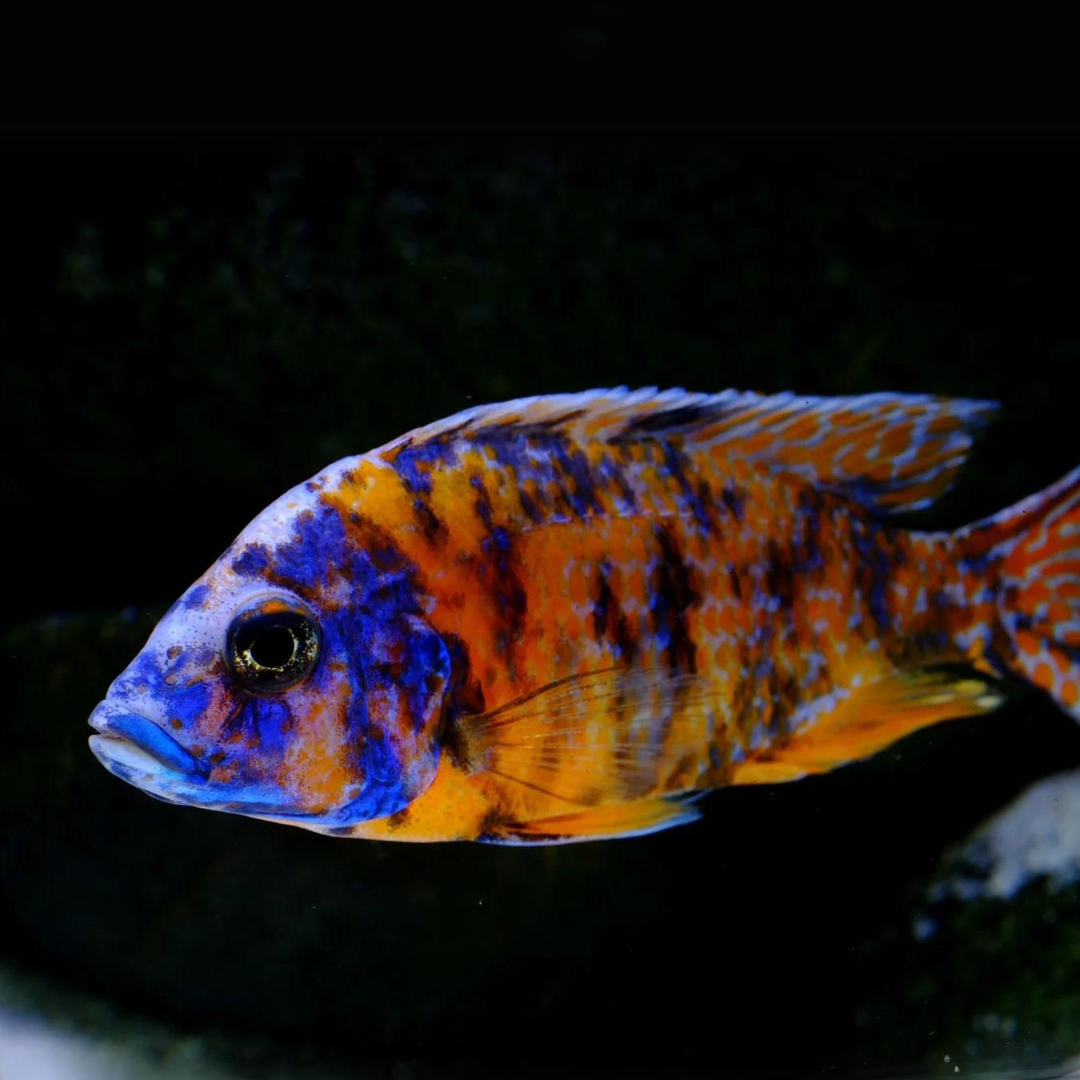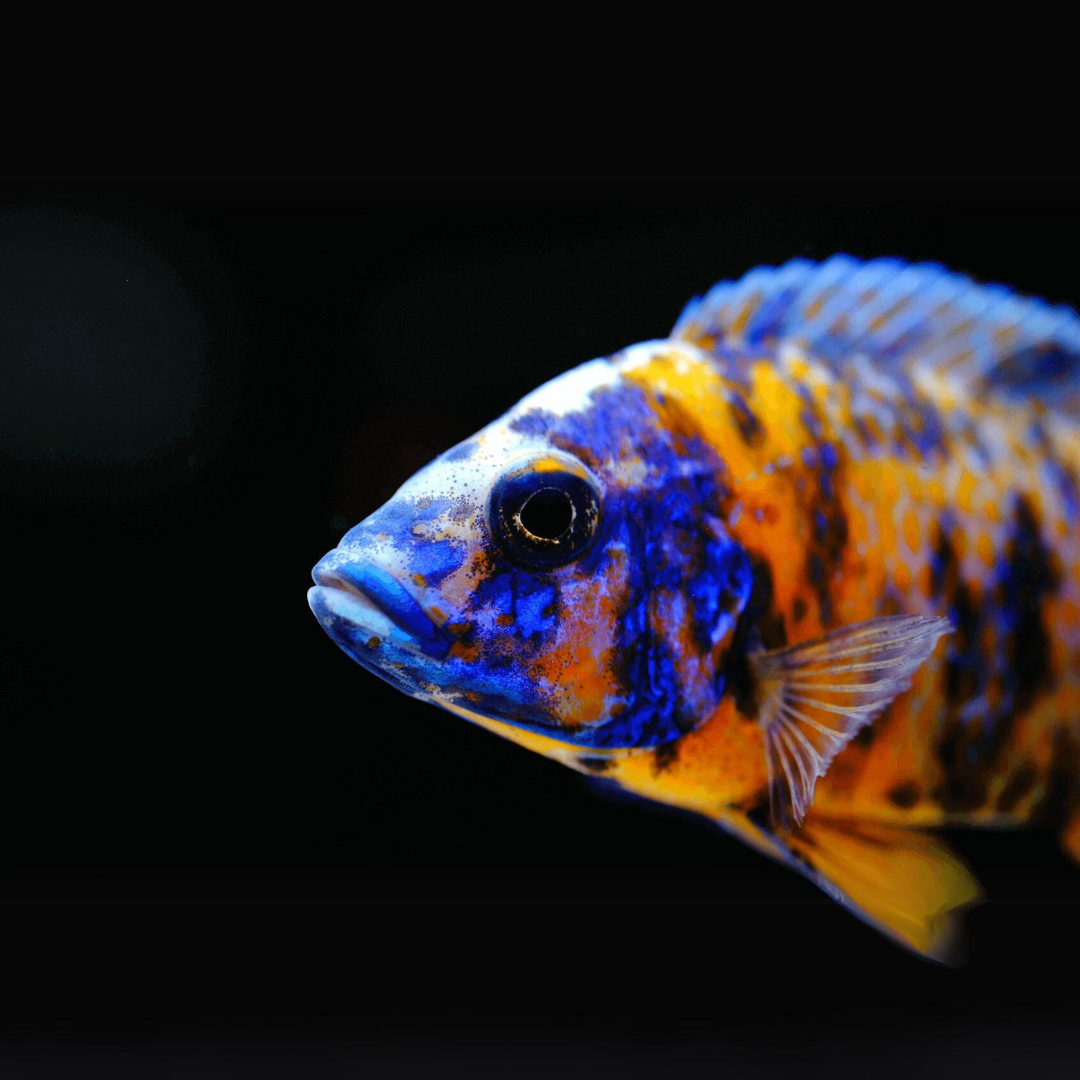Malawi Peacock Cichlid OB Peacock (Size 2 Inches) | Single
Malawi Peacock Cichlid OB Peacock (Size 2 Inches) | Single is backordered and will ship as soon as it is back in stock.
Couldn't load pickup availability
Description
Description
The Malawi Peacock Cichlid OB Peacock (Size 2" to 2.5") is a beautifully colored fish from Lake Malawi, renowned for its distinctive Orange Blotch (OB) pattern. This variety of Peacock Cichlid is a hybrid, combining the vibrant colors of the Aulonocara species with the irregular blotched pattern seen in Mbunas, resulting in a unique and stunning appearance.
Appearance:
At 2" to 2.5", the OB Peacock is still juvenile, but it already exhibits a variety of colors, typically featuring a base shade of blue or grey with vibrant orange, red, or yellow blotches spread across its body. These blotches are randomly distributed, making each individual fish unique in its patterning. As it matures, the colors become even more pronounced, with males displaying more intense and contrasting hues compared to females.
The body of the OB Peacock is elongated and streamlined, typical of Peacock Cichlids, with well-developed dorsal and anal fins that may show electric blue or reddish hues. The males generally grow more colorful as they reach maturity, while females remain more subdued in color.
Temperament and Behavior:
Peacock cichlids are generally less aggressive compared to Mbuna species, but the OB Peacock can exhibit some territorial behavior, especially when housed with other males or during breeding. They are active swimmers, constantly exploring their environment, and thrive in tanks with plenty of open swimming space and hiding spots.
Though less aggressive than Mbunas, the OB Peacock should still be housed with similarly tempered species, preferably other Peacocks or Haps, to avoid conflicts. In community tanks, ensure that there is enough space to minimize territorial disputes, as the males may become competitive for dominance, particularly when in the presence of females.
Tank Setup:
To keep the OB Peacock healthy, it is essential to replicate their natural habitat. A tank size of at least 55 gallons is recommended, with a substrate of fine sand and plenty of rocks or caves to provide shelter and territory. OB Peacocks prefer clean, well-filtered water with a pH between 7.8 and 8.6, and a temperature range of 75°F to 82°F (24°C to 28°C). They do well in aquariums with a mix of open swimming areas and hiding spots to reduce stress and aggression.
Diet:
In the wild, Peacocks are carnivores, feeding on small invertebrates found in the sand. In an aquarium setting, the OB Peacock thrives on a diet of high-quality cichlid pellets, protein-rich flakes, and occasional live or frozen foods such as brine shrimp, bloodworms, or daphnia. A varied diet will help enhance their vivid coloration.
Compatibility:
The OB Peacock can coexist with other Peacock Cichlids or Haps, as well as less aggressive Mbuna species, but avoid keeping them with highly aggressive tank mates. It is best to avoid housing them with very peaceful species or small, slow-moving fish, as they may become stressed or harassed. Keeping a ratio of one male to several females is recommended, especially to reduce aggression among males.






